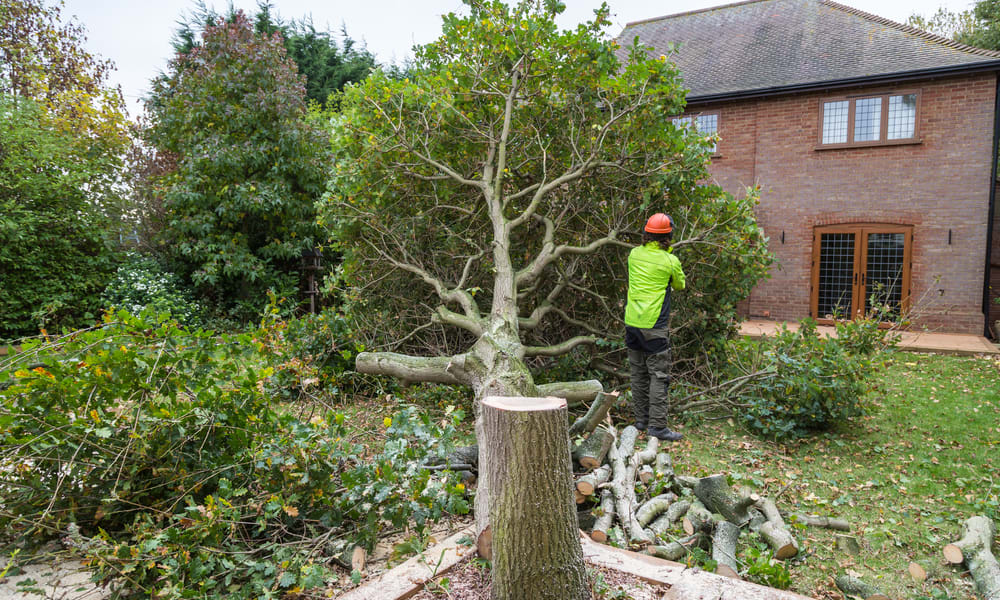Understanding Tree Pruning Services and Techniques in the UK
Comparing professional tree pruning services in the UK could help you maintain a vibrant garden. Discover key considerations, from understanding the benefits, to selecting equipment and techniques. - Identify the benefits of regular pruning - Key equipment insights - Safety guidelines to consider

What Are the Key Benefits of Regular Tree Pruning?
Regular tree pruning delivers numerous advantages for both residential and commercial properties across the UK. Proper pruning enhances tree health by removing diseased, damaged, or dead branches that could harbour pests or fungi. This preventative approach strengthens the tree’s natural defence mechanisms and promotes robust growth patterns.
Beyond health benefits, strategic pruning improves property aesthetics by shaping trees to complement landscape designs. Well-maintained trees increase property values while creating pleasant outdoor environments. Safety considerations are equally important, as removing overhanging branches reduces risks of property damage during storms or high winds common throughout the UK.
Which Equipment Is Essential for Safe Tree Pruning?
Professional tree pruning requires specialised equipment designed for different branch sizes and tree heights. Hand pruners work effectively for branches up to 2.5 centimetres in diameter, while loppers handle branches between 2.5 and 5 centimetres. For larger branches, pruning saws provide the necessary cutting power with precision control.
Safety equipment remains paramount when conducting pruning activities. Hard hats protect against falling debris, while safety glasses shield eyes from wood chips and branches. Non-slip gloves improve grip when handling tools, and sturdy ladders or professional climbing equipment enable safe access to higher branches. Professional services often utilise cherry pickers or aerial platforms for tall trees.
What Guidelines Ensure Safe Pruning Practices?
Guidelines for safe pruning practices begin with proper timing, as different tree species require pruning during specific seasons. Most deciduous trees benefit from winter pruning when dormant, while spring-flowering trees should be pruned immediately after blooming. Avoiding pruning during active growth periods prevents stress and reduces disease susceptibility.
The three-cut technique prevents bark stripping when removing larger branches. The first cut creates an undercut approximately 30 centimetres from the trunk, followed by a top cut further out that removes the branch weight. The final cut removes the remaining stub just outside the branch collar, allowing natural healing processes to seal the wound effectively.
How Do Professional Services Compare Across the UK?
Professional tree pruning comparison reveals significant variations in service quality, expertise levels, and pricing structures throughout the UK. Established arboricultural companies typically employ certified professionals with extensive training in tree biology, disease identification, and advanced pruning techniques. These specialists understand species-specific requirements and can assess overall tree health during pruning operations.
Regional differences affect service availability, with urban areas generally offering more competitive pricing due to higher provider concentrations. Rural locations may experience premium charges due to travel distances and limited local competition. Customer reviews for tree pruning services consistently highlight the importance of insurance coverage, professional certifications, and transparent pricing structures when selecting providers.
What Unique Considerations Apply to UK Tree Pruning?
UK tree pruning faces distinctive challenges due to the country’s diverse climate conditions and extensive native species variety. The unpredictable weather patterns, including sudden storms and extended wet periods, require pruning schedules that accommodate rapid seasonal changes. Conservation areas and Tree Preservation Orders (TPOs) add regulatory complexity, requiring professional consultation before major pruning work.
Native species like oak, ash, and beech demand specific pruning approaches that respect their natural growth habits. The prevalence of mature trees in UK landscapes means many pruning projects involve heritage specimens requiring delicate handling to preserve their longevity and historical significance.
What Are Tree Pruning Expenses Insights for UK Property Owners?
Tree pruning expenses insights reveal considerable variation based on tree size, complexity, and location throughout the UK. Basic pruning for small ornamental trees typically ranges from £75 to £150 per tree, while medium-sized trees may cost between £150 and £400. Large mature trees requiring specialist equipment can command prices from £400 to £1,200 or more.
| Service Type | Provider Example | Cost Estimation |
|---|---|---|
| Small Tree Pruning | Local Arborists | £75 - £150 |
| Medium Tree Pruning | Regional Tree Services | £150 - £400 |
| Large Tree Pruning | Specialist Contractors | £400 - £1,200+ |
| Emergency Storm Damage | 24/7 Tree Services | £200 - £800+ |
Prices, rates, or cost estimates mentioned in this article are based on the latest available information but may change over time. Independent research is advised before making financial decisions.
Professional tree pruning represents a worthwhile investment in property maintenance and safety. Understanding the benefits, equipment requirements, safety guidelines, and cost considerations enables property owners to make informed decisions about tree care. Whether choosing DIY approaches for minor pruning or engaging professional services for complex projects, proper planning and execution ensure healthy, attractive trees that enhance UK properties for years to come.




